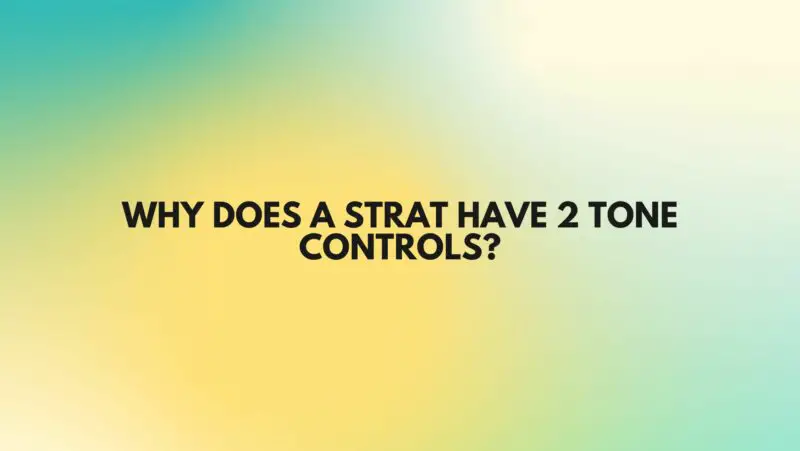The Fender Stratocaster, often referred to simply as the “Strat,” is an iconic electric guitar known for its timeless design and versatile tonal capabilities. One distinctive feature that sets the Stratocaster apart from other electric guitars is its control layout, which includes two tone controls. In this comprehensive article, we will explore the historical and functional reasons behind why a Stratocaster has two tone controls, how they work, and how they contribute to the instrument’s acclaimed sonic versatility.
Historical Origins
To understand the rationale behind the dual tone controls on a Stratocaster, it’s important to delve into the historical context of the guitar’s development. The Stratocaster was introduced by Fender in 1954 as a successor to the earlier Telecaster model. Leo Fender, the founder of Fender Musical Instruments Corporation, sought to create an electric guitar that addressed the evolving demands of musicians and offered a broader range of tonal possibilities.
The Tri-Sonic Pickup Configuration
One of the key innovations that Fender introduced with the Stratocaster was the use of three single-coil pickups, each positioned at a different point along the guitar’s body. These pickups were known as the “Tri-Sonic” pickup configuration. The three pickups were:
- Neck Pickup: Positioned closest to the neck, the neck pickup was known for its warm and round tones, making it suitable for jazz and clean, melodic playing.
- Middle Pickup: Located between the neck and bridge pickups, the middle pickup offered a balanced tonal response and became a versatile choice for various musical styles.
- Bridge Pickup: Positioned nearest to the bridge, the bridge pickup delivered bright, cutting, and biting tones with pronounced attack, ideal for genres like rock, blues, and country.
The Need for Tone Shaping
With this innovative pickup configuration, Fender recognized the need for greater tonal control to fully exploit the range of sounds that the Stratocaster could produce. Hence, the introduction of two tone controls.
Function of the Tone Controls
Here’s how the two tone controls on a Stratocaster function:
- Neck Pickup Tone Control: The first tone control is dedicated to the neck pickup. When turned counterclockwise, it rolls off the high frequencies, resulting in a warmer and mellower tone. Turning it clockwise allows more high frequencies to pass through, creating a brighter sound.
- Middle Pickup Tone Control: The second tone control is designated for the middle pickup. It operates in the same manner as the neck pickup tone control, allowing you to adjust the middle pickup’s tonal characteristics to your preference.
Tonal Versatility and Customization
The dual tone controls on a Stratocaster offer musicians a high degree of tonal versatility. By independently adjusting the tone controls for the neck and middle pickups, players can fine-tune the warmth and brightness of their sound, tailoring it to suit different playing styles and musical genres.
The absence of a dedicated tone control for the bridge pickup is a design choice that allows the bridge pickup to maintain its bright and cutting character without any high-frequency roll-off. This setup contributes to the Stratocaster’s renowned ability to produce a wide array of tones, from smooth jazz to searing rock.
Conclusion
The presence of two tone controls on a Fender Stratocaster is a testament to Leo Fender’s commitment to innovation and the pursuit of sonic excellence. These controls provide players with the means to shape and customize their guitar’s tone to meet the demands of various musical styles. The Stratocaster’s dual tone controls, in conjunction with its distinctive pickup configuration, have played a pivotal role in cementing its status as an enduring classic and a favorite among guitarists seeking sonic versatility and expressiveness in their playing.

